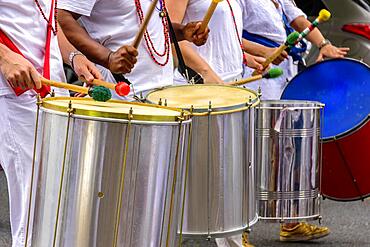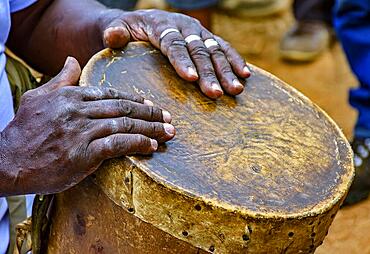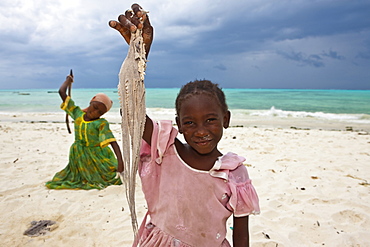Recent searches
Loading...
1358-394 - The tomb of Alexander Hamilton (1755 - 1804), American statesman, soldier and Founding Father at Trinity Church, Broadway, New York. His life was the inspiration for the hit Broadway musical, Hamilton.
1369-213 - Big waves hit the famous fishing village of Tellaro during a strong sea storm, Lerici, La Spezia, Liguria, Italy, Europe
1369-212 - Big waves hit the famous fishing village of Tellaro during a strong sea storm, Lerici, La Spezia, Liguria, Italy, Europe
1369-203 - Big waves hit San Pietro church during a strong sea storm, Portovenere (Porto Venere), UNESCO World Heritage Site, La Spezia, Liguria, Italy, Europe
832-403369 - Waves crash against the rocks of the coast in a storm
832-403368 - The surf of the turquoise blue ocean beats against rocks
832-403156 - Oops message comic bubble speech cartoon expression illustration gray background
832-402981 - Blue ocean waves hits the shoreline. Beautiful texture of turquoise sea water and golden sandy beach. Tropical summer seaside background
832-400418 - Breakfast served with coffee, orange juice, croissants, egg, cereals and fruits. Balanced diet
832-400211 - Ethnic drums also called atabaques on the streets of Pelourinho, the historic center of the city of Salvador in Bahia, Brasil
832-400209 - Ethnic drums also called atabaques on the streets of Pelourinho, the historic center of the city of Salvador in Bahia, Brasil
832-400187 - Metal rattle during street carnival festivities in Brazil, Brasil
832-400188 - Several drummers with their musical instruments in the Carnival celebrations in the streets of Brazil, Brasil
832-400169 - Percussionist playing a rudimentary atabaque during afro-brazilian cultural manifestation, Rio de Janeiro, Rio de Janeiro, Brasil
832-398186 - Side view man s hands preparing hit incoming volleyball net, Resolution and high quality beautiful photo
1358-66 - The Long Man of Wilmington, an Iron Age hill figure, looks down on the parched brown fields of drought hit East Sussex, Wilmington, East Sussex, England, United Kingdom, Europe
832-397148 - Aerial view of ocean waves and fantastic rocky shoreline, Aerial view of a coastline along Great Ocean Road, Aerial view of waves hitting rocks on beach with turquoise water
1336-416 - Snowy Dolomites peak hit by sunlight at sunset, Dolomites, Trentino-Alto Adige, Italy, Europe
1116-50948 - Silhouette of Ballycotton lighthouse being hit with the morning sun; Ballycotton, County Cork, Ireland
832-393337 - Indian peafowl (Pavo cristatus) beats wheel, Blue peacock Plaka Forest, Kos, Dodecanese, Greece, Europe
832-393335 - Indian peafowl (Pavo cristatus) beats wheel, Blue peacock Plaka Forest, Kos, Dodecanese, Greece, Europe
832-393334 - Indian peafowl (Pavo cristatus) beats wheel, Blue peacock Plaka Forest, Kos, Dodecanese, Greece, Europe
1350-2585 - Aerial view of Jetty at Fingal Head in New South Wales.
1179-5320 - Empty asphalt road on edge of the arctic sea hit by the midnight sun, Ersfjord, Senja, Troms county, Norway, Scandinavia, Europe
1178-32778 - African American man playing volleyball
1350-2 - April 17/18, 2001 aurora, taken from home in Alberta. looking south. Part of a series taken looking same direction as substorm hit and subsided, from Image #2 to #15, on Roll #1. (Roll #2 was second camera shooting Provia 100F with 28mm lens and 18mm lens.) All images in this series (#1-02 thru 15) processed in Photoshop with nearly identical enhancements to contrast and colour. Brightness toned down for longer overexposed shots (early ones).
1350-1394 - Muay Thai boxers fighting, Bangkok, Thailand
1350-1386 - Muay Thai boxers fighting, Bangkok, Thailand
1350-1387 - Muay Thai boxers fighting, Bangkok, Thailand
1350-1388 - Muay Thai boxers fighting, Bangkok, Thailand
1179-5180 - Majestic pinnacle of sea stack rock hit by waves, Sao Lourenco viewpoint, Canical, Madeira island, Portugal, Atlantic, Europe
860-289014 - The Carnot dike hit by the waves during the storm Ciara, Boulogne sur mer, February 2020, Hauts de France, France
832-391113 - Woman beats egg on flour for pasta dough, Germany, Europe
1113-103504 - Male golfer preparing to hit ball, woman looking to him, Apulia, Italy
832-389286 - The female eagle Paimas after the beating of a fox, Kisil Char, Olgii, Mongolia, Asia
832-386050 - Indian peafowl (Pavo cristatus), beating the wheel, captive, North Rhine-Westphalia, Germany, Europe
1116-48018 - A physically disabled golfer using a specialized wheelchair lines up his driver with the ball on the golf green, Edmonton, Alberta, Canada
1116-48127 - A female golfer at the top of her swing as she gets ready to hit the ball after setting up her shot, Edmonton, Alberta, Canada
1116-48019 - A physically disabled golfer driving a ball on a golf green and using a specialized golf assistance motorized hydraulic wheelchair, Edmonton, Alberta, Canada
1116-48017 - A physically disabled golfer chipping a ball onto the green and using a specialized golf assistance motorized hydraulic wheelchair, Edmonton, Alberta, Canada
1116-48020 - A physically disabled golfer putting a ball on a golf green and using a specialized golf assistance motorized hydraulic wheelchair, Edmonton, Alberta, Canada
1116-48016 - A physically disabled golfer putting a ball on a golf green and using a specialized golf assistance motorized hydraulic wheelchair, Edmonton, Alberta, Canada
1116-47641 - Piece of ice being hit by waves along the South shore of Iceland with stormy skies behind it, Iceland
1116-47495 - Close-up of lioness (Panthera leo) slapping male with paw, Serengeti National Park, Tanzania
1318-61 - Saxholsbjarg cliff being hit by large waves, Iceland, Polar Regions
1318-64 - Saxholsbjarg cliff being hit by large waves, Iceland, Polar Regions
1318-63 - Saxholsbjarg cliff being hit by large waves, Iceland, Polar Regions
1318-62 - Saxholsbjarg cliff being hit by large waves, Iceland, Polar Regions
1314-148 - Carefree tourist woman enjoying the picturesque natural alleyway of Standley Chasm as mid-day sun rays hit spectacular gorge, West MacDonnell National Park, Outback Red Centre, Northern Territory, Australia, Pacific
1116-33250B - Hawaii, Maui, Wailea Gold Golf Course, Female golfer swinging golf club, turf flying from club, view from front.
832-383048 - Indian peafowl (Pavo cristatus) beats a wheel, France, Europe
832-381555 - Stick dance performed by the tribal people of Yap Island, Caroline Islands, Micronesia, Oceania
832-379628 - Eurasian kingfisher (Alcedo atthis) flapping wings excitedly, female, Middle Elbe Biosphere Reserve, Saxony-Anhalt, Germany, Europe
1116-41278 - Waves Crashing As They Hit The Shore, Tauranga, New Zealand
857-94257 - A snowboarder doing a method on a side hit at Mount Snow, VT.
832-370387 - Young woman playing tennis in a holiday club, Manavgat, Turkey
832-371383 - Children beating an octopus with sticks in order to make it edible, Jambiani, Zanzibar, Tanzania, Africa
832-370390 - Boy, 10, playing tennis, hitting with a two-handed backhand, Munich, Upper Bavaria, Bavaria, Germany
832-370388 - Young woman playing tennis in a holiday club, Manavgat, Turkey
1171-28 - HDR capture of a pagoda near Wangu Tower with a bell inside - which visitors can hit to gain peace and/or luck.
832-337020 - Aquaplaning area in a driving safety center. Emergeny situations in deep water are practiced here. They can occur on highways after heavy rain, when vehicles at high speed hit deep water that cannot be dipslaced by the tires.
832-337022 - Aquaplaning area in a driving safety center. Emergeny situations in deep water are practiced here. They can occur on highways after heavy rain, when vehicles at high speed hit deep water that cannot be dipslaced by the tires.
1116-38049 - Hawaii, Big Island, Hawaii Volcanoes National Park, lava exploding as flow hits ocean, nighttime A28G
1116-30171 - Hawaii, Maui, Male golfer swinging golf club at the Maui Country Club course.
1116-28608 - Hawaii, Lanai, Man hitting a tee shot on The Challenge at Manele golf course.
1116-28611 - Hawaii, Lanai, Woman hitting a tee shot on The Challenge at Manele golf course.
1116-35566 - Hawaii, Big Island, Hawaii Volcanoes National Park, Kilauea, Pu'u O'o eruption, close-up fountaining action
1116-33980 - Hawaii, Big Island, Hawaii Volcanoes National Park, Kilauea, Pu'u O'o eruption, fountaining action
1116-28610 - Hawaii, Lanai, Woman hitting a tee shot on The Challenge at Manele golf course.
1116-30164 - Hawaii, Maui, Male golfer swinging golf club at the Maui Country Club course.
1116-30167 - Hawaii, Maui, Male golfer swinging golf club at the Maui Country Club course.
1116-33250 - Hawaii, Maui, Wailea Gold Golf Course, Female golfer swinging golf club, turf flying from club, view from front.
1116-38860 - Hawaii, Big Island, Hawaii Volcanoes National Park, Lava explodes as flow hits ocean, fountain bright blue sky C1634
1116-37747 - Hawaii, Maui, Spreckelsville Country Club, front view Jim Bendon fairway shot, trees distant background shadows
1116-29068 - Hawaii, Maui, Wailea, Female golfer on golf course.
1116-38217 - Upward view of senior man playing tennis, palm trees and blue sky
1116-37745 - Hawaii, Maui, Spreckelsville Country Club, front view of Jim Bendon hits fairway iron
1116-33253 - Hawaii, Maui, Wailea Gold Golf Course, Female golfer in midswing swing.
857-69014 - A small vehicle is smashed beyond recognition after being hit by large bounders in Beichuan Town, which was severely damaged by a powerful 7.9 earthquake. The Chinese government raised the death toll to 21,500 but has said fatalities could rise above 50,000. Tens of thousands could still be buried in collapsed buildings in Sichuan province, where the quake was centered.
857-33527 - An adolescent Pashtun girl shields her face as she carries water through the streets of the Meira camp for earthquake survivors, Northwest Frontier Province, Pakistan. The conservative code of the Pashtun tribe of the area dictate that girls must cover themselves, including their faces, after their first period. The crowded life in the camp has made such rules difficult to follow. The Meira Tent camp (also called Mera, or Maria camp), is located on the Indus River in the Battagram district. The camp, the largest for displaced people in Pakistan, hosts over 21,000 earthquake survivors, primarily from the Allai valley in Pakistan's NWFP, one of the areas worst-hit by the October 8, 2005 earthquake.
857-33520 - A Pashtun girl holds her younger brother, in the Meira camp for earthquake survivors in the Northwest Frontier Province, Pakistan. The Meira Tent camp (also called Mera, or Maria camp), is located on the Indus River in the Battagram district. The camp, the largest for displaced people in Pakistan, hosts over 21,000 earthquake survivors, primarily from the Allai valley in Pakistan's NWFP, one of the areas worst-hit by the October 8, 2005 earthquake.
857-33534 - A Pashtun man returning home to his mountain home from a camp for earthquake survivors, carries boxes up a steep hill, in the Battagram District, Pakistan's Northwest Frontier Province. The Pakistan army has dictated that all camps for people displaced by the earthquake be emptied by early April, whether families want to return or not. The Battgram district was one of the worst-hit by the October 2005 earthquake, and aftershocks and heavy rains continue to trigger landslides, which have hampered reconstruction efforts and the return of earthquake survivors to their mountain villages from the low altitude tent camps where many spent the winter.
857-33777 - A Pashtun man stands outside the Cuban hospital in the Meira camp for earthquake survivors, NWFP, Pakistan. The Cuban government sent 30,000 doctors, nurses and other personnel to set up field hospitals throughout the earthquake affected area. The Meira Tent camp (also called Mera, or Maria camp), is run by the Pakistani army like a small city, and is located on the Indus River in the Battagram district. The camp, the largest for displaced people in Pakistan, hosts over 21,000 earthquake survivors, primarily Pashtuns from the Allai valley in Pakistan's NWFP, one of the areas worst-hit by the October 8, 2005 earthquake.
857-33773 - A girl in the Meira tent camp for earthquake survivors stands on top of a pile of her family's belongings as they wait for transportation from the camp, where they have spent the winter, back to their devastated mountain village, in the NWFP, Pakistan. The Pakistani army, which runs the camp, has mandated that the camps be cleared by early April, despite the fact that many families are afraid or unprepared to return to their devastated homes. The Meira Tent camp (also called Mera, or Maria camp), is located on the Indus River in the Battagram district. The camp, the largest for displaced people in Pakistan, hosts over 21,000 earthquake survivors, primarily from the Allai valley in Pakistan's NWFP, one of the areas worst-hit by the October 8, 2005 earthquake.
857-33522 - In the Meira camp for earthquake survivors, two Pashtun men sit by piles of family possesions, waiting for the truck which will take them from the camp, where they have spent the winter, back to their devastated mountain village, in the Northwest Frontier Province, Pakistan. The Pakistani army, which runs the camp, has mandated that the camps be cleared by early April, despite the fact that many families are afraid or unprepared to return to their devastated homes. The Meira Tent camp (also called Mera, or Maria camp), is located on the Indus River in the Battagram district. The camp, the largest for displaced people in Pakistan, hosts over 21,000 earthquake survivors, primarily from the Allai valley in Pakistan's NWFP, one of the areas worst-hit by the October 8, 2005 earthquake.
857-33533 - On the the road to the Allai Valley, men try to push a truck that is stuck in mud and landslide debris and which is blocking other trucks full of humanitarian aid and earthquake survivors returning to their mountain villages, Battagram District, Pakistan's Northwest Frontier Province. The region was one of the worst-hit by the October 2005 earthquake, and aftershocks and heavy rains continue to trigger landslides, which have hampered reconstruction efforts and the return of earthquake survivors to their mountain villages from the low altitude tent camps where many spent the winter.
857-33782 - On the the road to the Allai Valley, a Pashtun family carries luggage past trucks that are stuck in mud and landslide debris-the trucks are full of other families and their possessions traveling back to their mountan villages, Battagram District, Pakistan's Northwest Frontier Province. The region was one of the worst-hit by the October 2005 earthquake, and aftershocks and heavy rains continue to trigger landslides, which have hampered reconstruction efforts and the return of earthquake survivors to their mountain villages from the low altitude tent camps where many spent the winter.
857-33537 - Pashtun men clear rocks from a landslide that is blocking the road to the Allai Valley, and preventing many trucks full of earthquake survivors and their possessions from traveling back to their mountan villages, Battagram District, Pakistan's Northwest Frontier Province. The region was one of the worst-hit by the October 2005 earthquake, and aftershocks and heavy rains continue to trigger landslides, which have hampered reconstruction efforts and the return of earthquake survivors to their mountain villages from the low altitude tent camps where many spent the winter.
1195-68 - Hardest hit was a 650 kilometers stretch of the somali coastline between garacad (mudung region) and xaafuun (bari region), which forms part of the puntland province near the horn of africa. The tsunami resulted in the death of some 300 people and extensive destruction of shelters, houses and water sources as well as fishing gear. The livelihoods of many people residing in towns and small villages along the somali indian ocean coastline, particularly in the northern regions, were devastated
1195-70 - Hardest hit was a 650 kilometers stretch of the somali coastline between garacad (mudung region) and xaafuun (bari region), which forms part of the puntland province near the horn of africa. The tsunami resulted in the death of some 300 people and extensive destruction of shelters, houses and water sources as well as fishing gear. The livelihoods of many people residing in towns and small villages along the somali indian ocean coastline, particularly in the northern regions, were devastated
1195-52 - Hardest hit was a 650 kilometers stretch of the somali coastline between garacad (mudung region) and xaafuun (bari region), which forms part of the puntland province near the horn of africa. The tsunami resulted in the death of some 300 people and extensive destruction of shelters, houses and water sources as well as fishing gear. The livelihoods of many people residing in towns and small villages along the somali indian ocean coastline, particularly in the northern regions, were devastated
1195-57 - Hardest hit was a 650 kilometers stretch of the somali coastline between garacad (mudung region) and xaafuun (bari region), which forms part of the puntland province near the horn of africa. The tsunami resulted in the death of some 300 people and extensive destruction of shelters, houses and water sources as well as fishing gear. The livelihoods of many people residing in towns and small villages along the somali indian ocean coastline, particularly in the northern regions, were devastated
1195-76 - Hardest hit was a 650 kilometers stretch of the somali coastline between garacad (mudung region) and xaafuun (bari region), which forms part of the puntland province near the horn of africa. The tsunami resulted in the death of some 300 people and extensive destruction of shelters, houses and water sources as well as fishing gear. The livelihoods of many people residing in towns and small villages along the somali indian ocean coastline, particularly in the northern regions, were devastated
1195-85 - Hardest hit was a 650 kilometers stretch of the somali coastline between garacad (mudung region) and xaafuun (bari region), which forms part of the puntland province near the horn of africa. The tsunami resulted in the death of some 300 people and extensive destruction of shelters, houses and water sources as well as fishing gear. The livelihoods of many people residing in towns and small villages along the somali indian ocean coastline, particularly in the northern regions, were devastated
1195-87 - Hardest hit was a 650 kilometers stretch of the somali coastline between garacad (mudung region) and xaafuun (bari region), which forms part of the puntland province near the horn of africa. The tsunami resulted in the death of some 300 people and extensive destruction of shelters, houses and water sources as well as fishing gear. The livelihoods of many people residing in towns and small villages along the somali indian ocean coastline, particularly in the northern regions, were devastated
1195-73 - Hardest hit was a 650 kilometers stretch of the somali coastline between garacad (mudung region) and xaafuun (bari region), which forms part of the puntland province near the horn of africa. The tsunami resulted in the death of some 300 people and extensive destruction of shelters, houses and water sources as well as fishing gear. The livelihoods of many people residing in towns and small villages along the somali indian ocean coastline, particularly in the northern regions, were devastated
1195-79 - Hardest hit was a 650 kilometers stretch of the somali coastline between garacad (mudung region) and xaafuun (bari region), which forms part of the puntland province near the horn of africa. The tsunami resulted in the death of some 300 people and extensive destruction of shelters, houses and water sources as well as fishing gear. The livelihoods of many people residing in towns and small villages along the somali indian ocean coastline, particularly in the northern regions, were devastated., /shark fishing is main source of income for many of the somalis fishermen
1195-71 - Hardest hit was a 650 kilometers stretch of the somali coastline between garacad (mudung region) and xaafuun (bari region), which forms part of the puntland province near the horn of africa. The tsunami resulted in the death of some 300 people and extensive destruction of shelters, houses and water sources as well as fishing gear. The livelihoods of many people residing in towns and small villages along the somali indian ocean coastline, particularly in the northern regions, were devastated



































































































